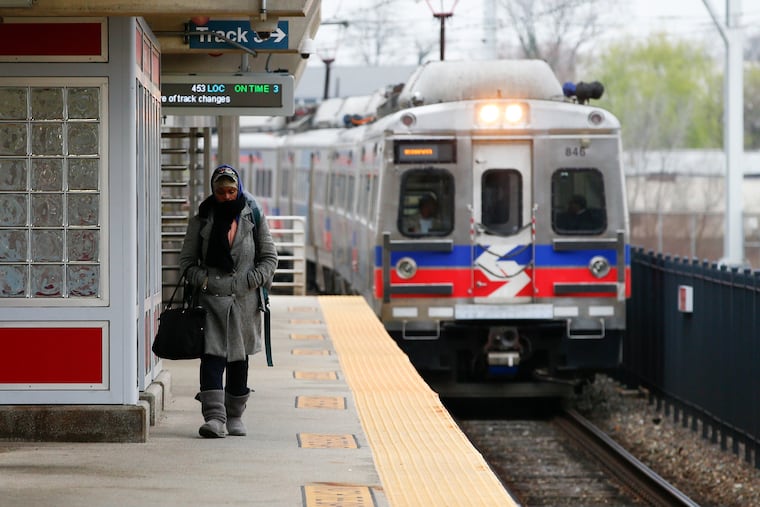SEPTA launches effort to bring Regional Rail fares closer to bus, subway, and trolley services
It’s a move to adapt to changing rider needs, including a decline in traditional commuting patterns.

SEPTA wants to make Regional Rail more affordable for Philadelphians by lowering fares and allowing bus, subway, and trolley transfers for people who use the commuter service to travel within the city, the agency announced Tuesday.
Such moves could advance the authority’s strategic goal of melding a sprawling transit system into a more unified network that would allow people to move easily from one mode of service to another.
The move recognizes changing rider needs, including a decline in traditional suburb-to-Center City commuting patterns that accelerated during last year’s coronavirus shutdowns and is expected to continue at some level after the pandemic recedes.
“Nothing is off limits,” SEPTA General Manager and CEO Leslie S. Richards said in a statement, including fares, frequency of Regional Rail service, and connections to other modes of transit in the system.
Transit advocates have long criticized the agency for making it hard to use the commuter rail system for local travel within the city, where SEPTA’s most loyal customers live.
Regional Rail’s underused capacity became obvious in the pandemic when many suburban professionals were able to work from home while frontline workers living in the city still had to commute.
“We want to see how we can encourage more trips on Regional Rail, so that we can get our ridership back to what it was pre COVID … understanding that it might be different riders and they might be on regional rail for different reasons, not just commuting,” said Jody Holton, SEPTA’s assistant general manager for planning.
The one-way cash fare for using Regional Rail within much of the city is currently $6, compared to $2.50 for buses, trolleys, and surface-subway rail lines. Riders who use the SEPTA Key Card travel wallet are charged $4 one way on Regional Rail in much of the city.
“Regional Rail service today is too infrequent and expensive to serve the needs of many riders throughout the city and region,” said Dan Trubman, an organizer with 5th Square, the urbanist group that advocates for public transit improvements. “We strongly support any moves to make it more of a walk-up service like the bus or subway,” he said.
Regional Rail daily ridership is about 30% of the 132,000 pre-pandemic customers, SEPTA said. It is running about 65% of the trains it did in 2019, though Holton said officials anticipate some uptick in both ridership and service this fall.
The railroad’s zone-based fare system also can make shorter suburb-to-suburb trips “confusing and definitely cost prohibitive” for some potential riders who live in surrounding counties, Holton said. Reduced levels of service can at times mean gaps of an hour or more between Regional Rail trains.
Hearing from riders and former riders of Regional Rail, as well as people who don’t use the service, will be critical to figuring out what changes to make, Holton said. By next summer, she said the agency would have enough information to make proposals.
In addition to fare changes, SEPTA will need to coordinate Regional Rail with other services, she said, such as scheduling buses to arrive at the Fort Washington station when people will need them to go to a nearby office park.
Some longer term changes may require new spending on signals or switches, or replacement of the railroad’s aging trains, Holton said.
To begin the process, SEPTA has launched a web-based survey to gather riders’ opinions on Regional Rail. Officials also have scheduled an inaugural virtual public meeting on the topic for Oct. 12 at 6:30 p.m.
At the same time, SEPTA is in the midst of planning or studying other changes, including a comprehensive redesign of its bus network, an update of wayfinding signage to make city rail transit easier to use, a proposed $1.8 billion modernization of the trolley network and a $2 billion extension of rail service to King of Prussia in Montgomery County.